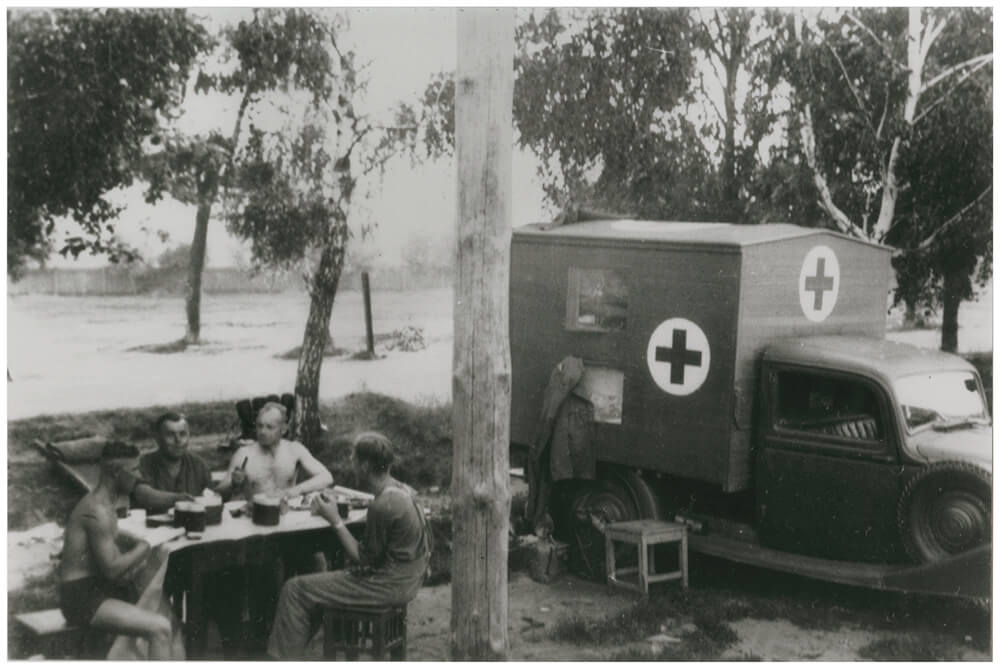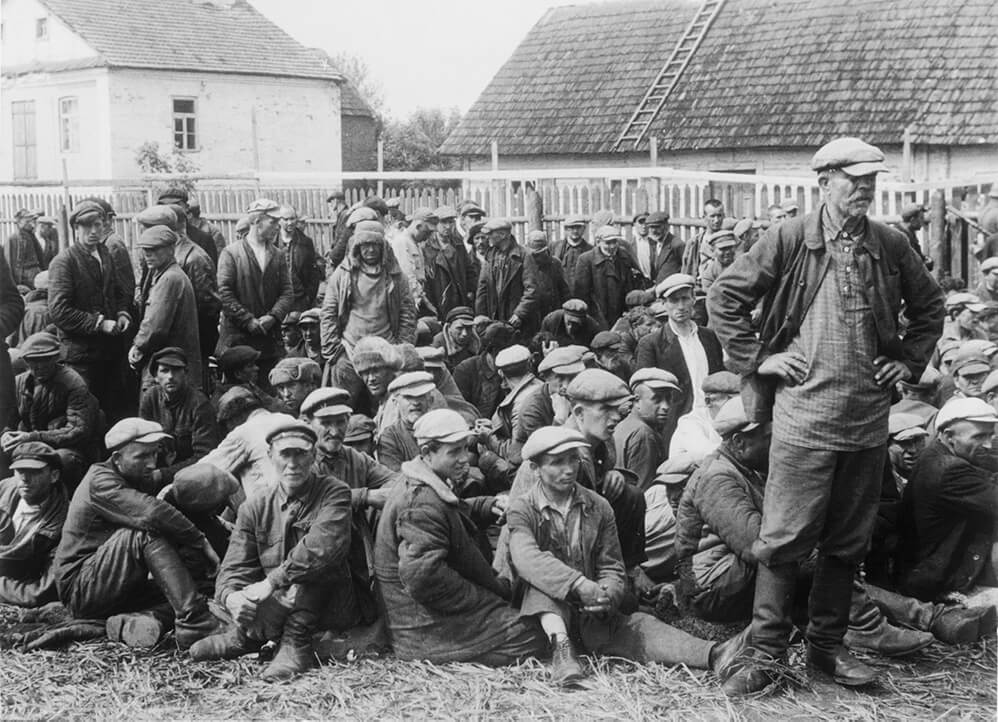Baranovichi

Members of Einsatzkommando 8 resting in Baranovichi.
Die Bundesbeaufragte für die Unterlagen des Staatssicherheitsdienstes der ehemaligen DDR, BerlinAfter the German invasion of the Soviet Union, the Byelorussian town of Baranovichi became the seat of the Regional Commissariat and the headquarters of the Security Police. Several POW camps were soon set up there with tens of thousands of prisoners languishing in the open air. At the behest of the Nazis, a ghetto was established for the Jewish inhabitants of the town and its surroundings as early as the summer of 1941. The ruthless mass murder of the ghetto’s population began gradually. Only a few dozen of its inhabitants managed to escape. All of the others were killed.
Transport AAy left Terezín on 28 July 1942. The original destination was Minsk in Byelorussia, but this was changed as a result of a mass murder that was planned there. Instead, the train stopped in Baranovichi. The prisoners who disembarked onto the platform of the town’s railway station were told that they were getting a break for hot food. It was only when they had been taken to a pit with armed soldiers standing by that the reality of what was about to happen dawned on them. The firing squads started their work, which continued until nightfall. Other victims were herded into mobile gas chambers and gassed. Tables with refreshments and alcohol were prepared nearby for the shooters. The corpses were then thrown into a mass grave by members of the auxiliary squad. In the evening, a group of women from the ghetto were given the task of loading the victims’ clothes and shoes onto trucks. After finishing the job, they were shot. Only two women managed to save themselves by hiding under piles of clothes. None of the thousand deportees from Terezín survived.
